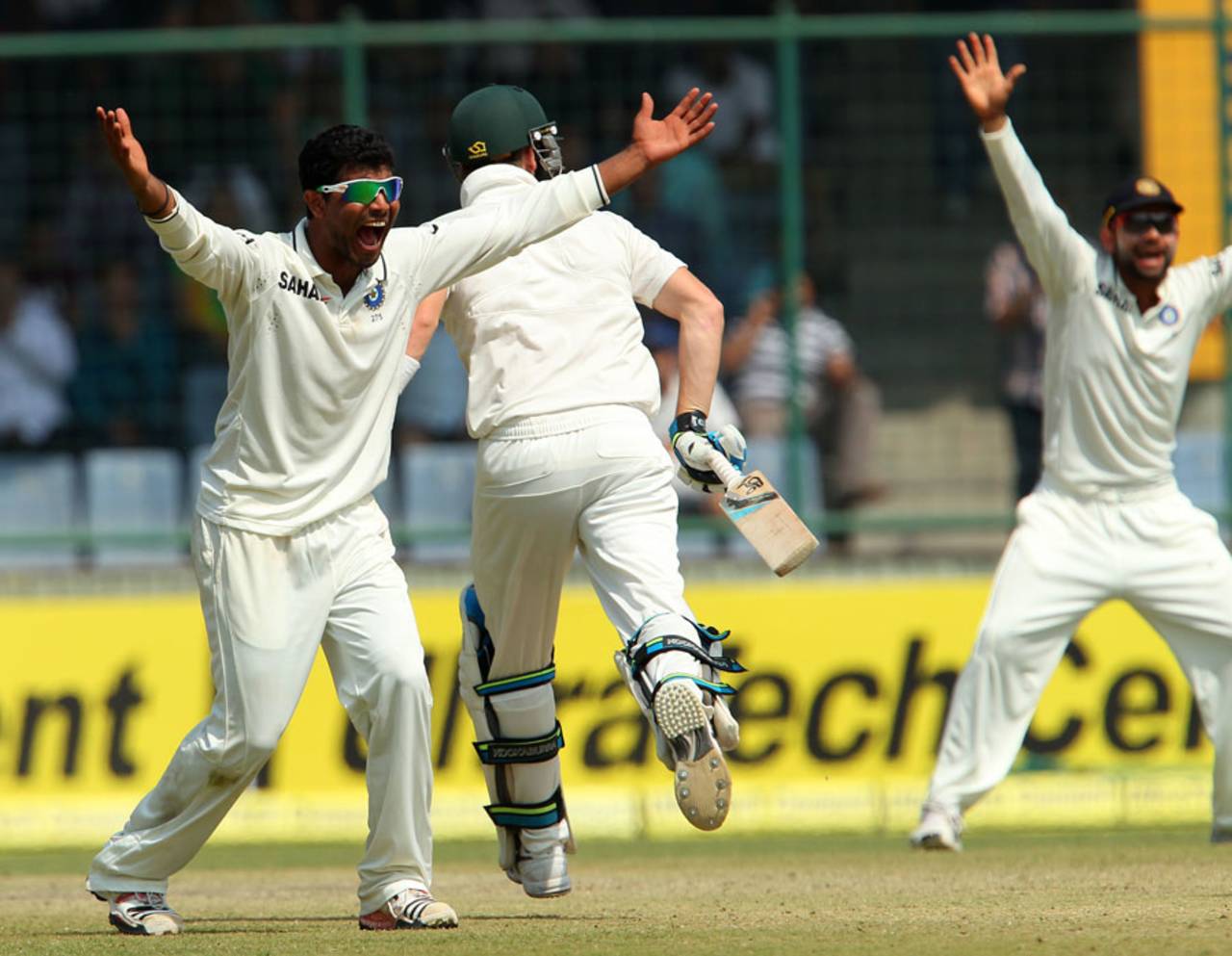India's need for bowling variety
Why their traditional strength, spin, ought not to be forskaen in favour of pace
V Ramnarayan
20-Mar-2014

Ravindra Jadeja: accurate and persistent but ineffective on bland pitches • BCCI
In my last post, I recommended a return to a more balanced bowling attack for India - comprising two spinners and two pacemen, discarding the present approach of a pace-oriented outfit, especially overseas. In the course of doing that, I seem to have given the impression that I favour one type of bowler over another in the Indian line-up.
True, no spinner today promises to win matches for India, and I do believe that in any attack, the best four bowlers should be the ideal mix, regardless of specialisation. I do maintain, however, that Indian cricket should not mindlessly forsake traditional skills in favour of pace, just as Indian hockey should not give up dribbling skills for brute power.
My argument has been that when India's seamers have repeatedly failed to trouble opposing batsmen, they may be better off with greater variety in the bowling department. It can be nobody's argument on available evidence that India has demon fast bowlers, or even great swing bowlers among the current lot, with Zaheer Khan's sustained effectiveness on the wane. Among the spinners, while Ashwin should be given the benefit of doubt despite his recent lack of success, I reiterate that Pragyan Ojha deserves to be given a decent run as a Test bowler.
If none of the available crop of spinners measures up on a consistent basis, quality spinners must be found to replace them, so that India can still field two of them in the playing XI, whether at home or abroad, if only to improve the over rates! Under-19 and university cricket - whose revival was the subject of much hype in the recent past - should provide a reasonable pool of slow bowlers from which to pick and groom spinners for Test match cricket.
Ravindra Jadeja is a fighter by temperament, a fine cricketer whose batting potential has not yet been fully realised in Test cricket, and by far the best fielder in the team. His catching and ability to engineer run-outs have already threatened to swing matches India's way quite a few times. His left-arm spin is accurate and persistent, even destructive on a certain kind of wicket, but on bland pitches he is quite harmless, thus disqualifying him as the sole spinner in the XI abroad. He should be able to win a place in the team as a middle-order batsman, spectacular fielder, and support bowler - until he evolves as a more attacking spinner.
To pose a threat to batsmen on good wickets, he will have to develop a higher-arm bowling action and learn to give the ball a fair rip. I know it will complicate team balance, but an attack consisting of two seamers, two specialist spinners and Jadeja as an allrounder seems an attractive proposition. Six specialist batsmen including the wicketkeeper would then be the limit.
The lack of an effective spinner has cost quite a few teams dearly in recent months. With Graeme Swann first losing his bite, and later Monty Panesar proving inadequate for the job, England suffered heavily against Australia, despite possessing reasonable firepower in the pace department. South Africa's problem is so acute that they have had to fall back on JP Duminy to provide variety to their pace-oriented attack. With class offspinner Nathan Lyon in their XI, Australia seem the sole exception among non-subcontinental teams, though West Indies have had intermittent relief in this regard; despite doubts raised against the actions of two of their spinners, they still finds a place for one or two slow men in the XI.
Offspinner Saeed Ajmal finds support from the likes of left-arm spinner Abdur Rehman in conditions favouring spin, but Pakistan have abundant seam-bowling talent, which enables them to go in with a single spinner on pitches favouring seam.
A worrying factor in India's bowling, both pace and spin, is the general lack of accuracy and consistency. It should not be beyond the capacity of international bowlers to achieve the rigour of six good balls per over. The inability of spinners in particular to do so is inexcusable, especially as these are fundamental aspects of the game that should have been mastered at the schoolboy level.
Finally, every leading state in Indian cricket has former spin bowlers with a high level of expertise. If some of them are commissioned to work with promising local spinners to improve both their skills and their work ethic, India should be able to produce quality spinners in the near future, ready to take over from the current crop. I personally see this as the logical way forward, though this certainly does not mean that I advocate the neglect of our pace bowling talent.
V Ramnarayan is an author, translator and teacher. He bowled offspin for Hyderabad and South Zone in the 1970s